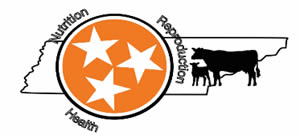
Most beef herds in the United States are kept in outdoor pastures. These cattle are subject to the changes that come with seasonal weather patterns (Fogsgaard 2018). The southeast experiences upwards of 6 inches of rainfall each month during the Spring. Additionally seasonal highs may reach above 65°F with lows of 50°F or lower. Due to high rainfall with temperatures generally above freezing, mud typically becomes prevalent during this time of the year. Especially in high traffic areas, such as feeders or water sources, these muddy areas may have negative impacts on cattle production, through physical and environmental stress (Morrison 1970).
When mud forms, cattle are subject to stressors that could cause injury or a decrease in production efficiency, including difficulty walking and foot and leg problems (Senger 2002). Reproductive efficiency is also impacted by ground conditions. Cows that are kept on dry soils spend longer periods of time exhibiting behavioral estrus and are more receptive to the bull (Senger 2002). Variation in weather patterns, such as extreme changes in temperature and rainfall, can be another factor that leads to cattle stress (Mader 2015). When temperatures rise, cattle must expel additional heat to ensure they maintain thermoneutrality. When temperatures fall, energy requirements increase so the animal can affectively regulate internal temperature, and maintain productivity (Young 1981).
To ensure that environmental stress from wet conditions is kept to a minimum, cattle should be maintained in areas that are as clean and dry as possible. One consideration for this is the amount of shelter available for cattle. Most beef breeds are well accustomed to changes in weather; however, shelters can provide more dry areas for rest during wet times (Schütz 2010). It is imperative to ensure that nutritional needs are also met during times of environmental stress to allow effective thermoregulation in cattle. Mud, moisture, and environmental stress are factors impacting the health of cattle that must be properly managed to maintain efficiency.
Download a copy of this article as a pdf file.

